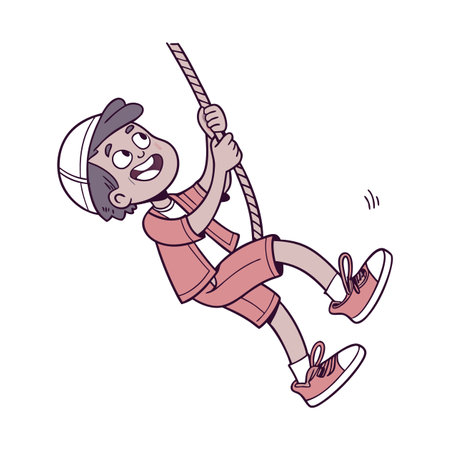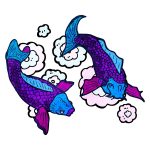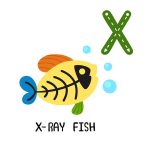1. The Importance of Timing in Fishing
If you’ve ever spent hours casting your line without a single bite, you might be fishing at the wrong time. Timing isn’t just important in comedy—it’s everything in fishing too. Many beginners overlook this key factor, but understanding when fish are most active can make or break your day on the water.
How Fish Behavior Changes Throughout the Day
Fish aren’t active 24/7. Their behavior changes depending on the time of day. Most species feed during specific windows—usually early morning and late afternoon. This is when the water temperature is ideal and light levels are comfortable for feeding.
| Time of Day | Fish Activity Level |
|---|---|
| Early Morning (Sunrise – 9 AM) | High |
| Midday (10 AM – 3 PM) | Low |
| Late Afternoon (4 PM – Sunset) | High |
| Night (After Sunset) | Moderate to High (depends on species) |
Seasonal Changes and Fish Patterns
The time of year also plays a huge role. In spring, fish are often more aggressive due to spawning behaviors. Summer brings warmer water temps, so fish may hide in deeper, cooler areas during the heat of the day. Fall is another peak season as fish feed heavily to prepare for winter. Winter can be slow, but some species like trout and pike stay active under the ice.
| Season | General Fish Behavior |
|---|---|
| Spring | Active; spawning season for many species |
| Summer | Variable; active early and late, sluggish mid-day |
| Fall | High activity; feeding before winter |
| Winter | Slow; some cold-water species still active |
The Role of Weather Conditions
You don’t need to be a meteorologist to catch fish, but paying attention to weather conditions helps. Overcast days usually mean better fishing because fish feel safer from predators and roam further from cover. A falling barometer (often before a storm) can trigger feeding frenzies, while high-pressure systems tend to shut things down.
Quick Weather Tips for Better Fishing:
- Cloudy Days: Great for all-day fishing.
- Before a Storm: Fish feed aggressively—get out there!
- After a Cold Front: Expect slower action.
- Stable Weather: Consistent patterns mean predictable bites.
Avoiding Common Beginner Mistakes
A lot of new anglers head out during mid-day or when it’s convenient for them—but not for the fish. Understanding timing helps you work smarter, not harder. Pay attention to local fishing reports, sunrise/sunset times, seasonal trends, and upcoming weather changes. It’s not just about being on the water—it’s about being there at the right moment.
The bottom line? If you want to catch more fish, don’t just think about where youre fishing—think about when.
2. Common Timing Mistakes Beginners Make
If youre new to fishing, its easy to think that any time is a good time to wet a line. But timing can make or break your success out on the water. Many beginners dont realize how much factors like time of day, season, and even weather patterns affect fish behavior. Here are some of the most common timing mistakes novice anglers make—and how to avoid them.
Fishing at the Wrong Time of Day
Fish are more active during certain times of the day. Most species feed more aggressively during low-light conditions, such as early morning or late evening. Fishing in the middle of the day—especially on hot, sunny days—can drastically reduce your chances of catching anything because fish tend to retreat to deeper, cooler waters.
| Time of Day | Fish Activity Level |
|---|---|
| Early Morning (sunrise – 9 AM) | High |
| Midday (10 AM – 4 PM) | Low |
| Late Afternoon to Dusk (4 PM – sunset) | High |
| Night (after dark) | Moderate (species dependent) |
Ignoring Seasonal Patterns
Fish behavior changes with the seasons due to spawning cycles, water temperature, and food availability. Beginners often overlook these shifts and fish the same way year-round. For example, bass might be close to shore during spring for spawning but will move deeper in summer when water temperatures rise.
| Season | General Fish Behavior |
|---|---|
| Spring | Spawning season; fish found near shallow areas |
| Summer | Fish go deeper to stay cool; early morning and late evening best for bites |
| Fall | Feeding heavily before winter; active throughout the day |
| Winter | Slow metabolism; fish are less active and harder to catch |
Not Paying Attention to Weather Conditions
The weather has a major influence on fish activity. Overcast days can actually improve your chances since fish feel safer from predators and may roam farther from cover. Sudden drops in temperature or pressure can shut down a bite completely. Many beginners head out without checking the forecast—and end up disappointed.
Tips for Better Timing:
- Check sunrise and sunset times before heading out.
- Research seasonal patterns for your target species.
- Monitor weather forecasts and barometric pressure changes.
- Avoid extreme heat or cold snaps unless you know how fish react in those conditions.
A little planning goes a long way when it comes to fishing. By avoiding these common timing mistakes, youll set yourself up for a much more productive and enjoyable experience on the water.

3. Understanding Fish Behavior and Feeding Times
If youre new to fishing, one of the biggest mistakes you can make is heading out without knowing when fish are most likely to bite. Just like people, different fish have their own habits and routines. Some are early risers, while others prefer to feed when the sun starts setting. Understanding these patterns can be the difference between going home empty-handed or landing a cooler full of fish.
How Time of Day Affects Fish Activity
Fish behavior is heavily influenced by light, water temperature, and food availability. Most species have specific windows during the day when they’re actively feeding. These are typically early morning and late evening, often referred to as the “golden hours” in fishing circles.
General Feeding Times by Species
Here’s a quick breakdown of when some popular U.S. game fish are most active:
| Fish Species | Best Time to Fish | Notes |
|---|---|---|
| Largemouth Bass | Early morning (sunrise) & late evening (sunset) | They prefer low-light conditions; avoid mid-day heat in summer. |
| Trout | Dawn and dusk; sometimes midday in cooler seasons | More active in cooler temperatures; overcast days can extend feeding times. |
| Catfish | Nighttime or very early morning | Nocturnal feeders; great for night fishing trips. |
| Panfish (Bluegill, Crappie) | Morning and late afternoon | Bite best when water warms slightly after sunrise. |
| Striped Bass | Dawn and dusk; tidal changes also matter (for coastal waters) | Watch for baitfish activity—stripers follow the food. |
Why Timing Matters So Much for Beginners
A lot of beginners hit the water at noon because it’s convenient—but that’s often the worst time to fish. The sun is high, temperatures peak, and many species retreat to deeper, cooler waters where they’re harder to reach. If you’re not paying attention to timing, you might think there are no fish around when really, they’re just not feeding.
The Role of Seasons and Weather
Keep in mind that feeding times can shift slightly depending on the season and weather conditions. For example:
- Summer: Fish feed early before the heat sets in.
- Fall: Cooler temps mean longer feeding periods during daylight hours.
- Winter: Fish slow down but may feed during warmer parts of the day.
- Spring: Increased activity as water warms up; mornings are still best.
Pro Tip:
If youre unsure when to go, check a local fishing report or talk to someone at a nearby bait shop—they usually know whats biting and when.
The more you learn about fish behavior and timing, the more productive your fishing trips will be. Its not just about casting your line—its about being in the right place at the right time.
4. Weather Patterns and Water Conditions
Understanding how weather and water conditions affect fish behavior is key to avoiding one of the most common mistakes beginners make: fishing at the wrong time. Fish are incredibly sensitive to changes in their environment, and knowing what to look for can make or break your trip.
Weather Fronts
Fish respond strongly to barometric pressure changes that come with weather fronts. Before a cold front hits, fish tend to feed aggressively as they sense the pressure dropping. However, once the front passes and high pressure sets in, fish often become sluggish and harder to catch. Warm fronts, on the other hand, usually bring more favorable conditions, especially in cooler seasons.
How Fronts Affect Fishing:
| Condition | Fish Behavior |
|---|---|
| Before Cold Front | Increased feeding activity |
| After Cold Front | Lethargic, less likely to bite |
| Warm Front | More active, especially in spring/fall |
Water Temperature
Fish are cold-blooded creatures, which means their body temperature is regulated by their environment. Each species has a preferred temperature range where they’re most active. For example, largemouth bass are most active between 60°F and 75°F. If the water’s too cold or too warm, they’ll slow down or move deeper.
Ideal Water Temps for Common Species:
| Species | Optimal Temperature Range (°F) |
|---|---|
| Largemouth Bass | 60–75 |
| Trout | 50–65 |
| Walleye | 55–70 |
Moon Phases
The moon doesn’t just control tides—it also influences fish feeding habits. During a full moon or new moon, fish often feed more during nighttime due to increased light or activity levels in the water. Many anglers find success planning trips around these phases.
Moon Phase Fishing Tips:
- Full Moon: Great for night fishing; early morning bite may be slower.
- New Moon: Fish may feed heavily right before dawn.
- First/Last Quarter: Often considered average fishing times.
Water Clarity
The clarity of the water affects how well fish can see bait or lures. In clear water, lighter lines and natural-colored baits work best because fish can get a good look before striking. In murky or stained water, go bold—use bright colors or lures that make noise or vibrations.
Bait Tips Based on Water Clarity:
| Water Clarity | Bait Color/Type Recommendation |
|---|---|
| Clear | Naturals like green pumpkin or silver; finesse techniques work well |
| Muddy/Stained | Loud crankbaits; colors like chartreuse or black-blue combos |
If you want to improve your chances of catching fish, keep an eye on these environmental factors before heading out. With a bit of planning based on weather patterns and water conditions, youll be ahead of the game—and ahead of most beginners who overlook this critical part of timing.
5. Tips to Nail the Right Time for Fishing
If youre new to fishing, one of the biggest mistakes you can make is heading out at the wrong time. Even if youve got the best gear and the perfect spot, fishing at the wrong time can leave you empty-handed. Timing really is everything. Heres how to make sure youre fishing when the fish are biting.
Use Solunar Tables
Solunar tables are based on the moon phase and sun position, and they predict peak feeding times for fish. These tables have been used by seasoned anglers for decades and can give you a serious edge.
How to Read a Solunar Table
| Time Period | Activity Level | What It Means |
|---|---|---|
| Major Periods | High Activity | Fish are most likely to feed aggressively; best time to be on the water. |
| Minor Periods | Moderate Activity | Fish may still bite, but action could be slower than during major times. |
You can find solunar calendars online or even download apps that use your location to generate daily predictions.
Check Local Fishing Reports
Local fishing reports are goldmines of information. They’re usually updated weekly or even daily and include info like where fish are being caught, what baits are working, and—most importantly—when people are having success.
Where to Find Them:
- Your state’s Department of Natural Resources (DNR) website
- Bait and tackle shops (many post updates near the register)
- Fishing forums and Facebook groups in your area
- Apps like Fishbrain or Anglr that share community reports
Pay Attention to Weather and Water Conditions
The weather plays a huge role in fish activity. A sudden cold front can shut down bites, while overcast days often bring fish closer to the surface. Wind direction, barometric pressure, and even water temperature all matter more than you might think.
Quick Weather Guide:
| Condition | Effect on Fishing |
|---|---|
| Overcast skies | Good – fish roam more freely without direct sunlight. |
| Cold front just passed | Poor – fish tend to be sluggish after a drop in temperature. |
| Steady warm weather | Excellent – stable temps keep fish active. |
Tide Charts Matter (Especially for Saltwater)
If youre fishing saltwater, tide changes can make or break your trip. Fish tend to feed more actively during moving tides, especially during incoming tides when baitfish are pushed inland.
Where to Get Tide Info:
- NOAA Tides & Currents website
- Tide chart apps like Tides Near Me or FishTrack
- Local marinas or bait shops often post printed tide charts
Nailing the right time isn’t about luck—it’s about knowing where to look and what signs to pay attention to. With these tools in your tackle box, youll waste less time guessing and spend more time catching.

